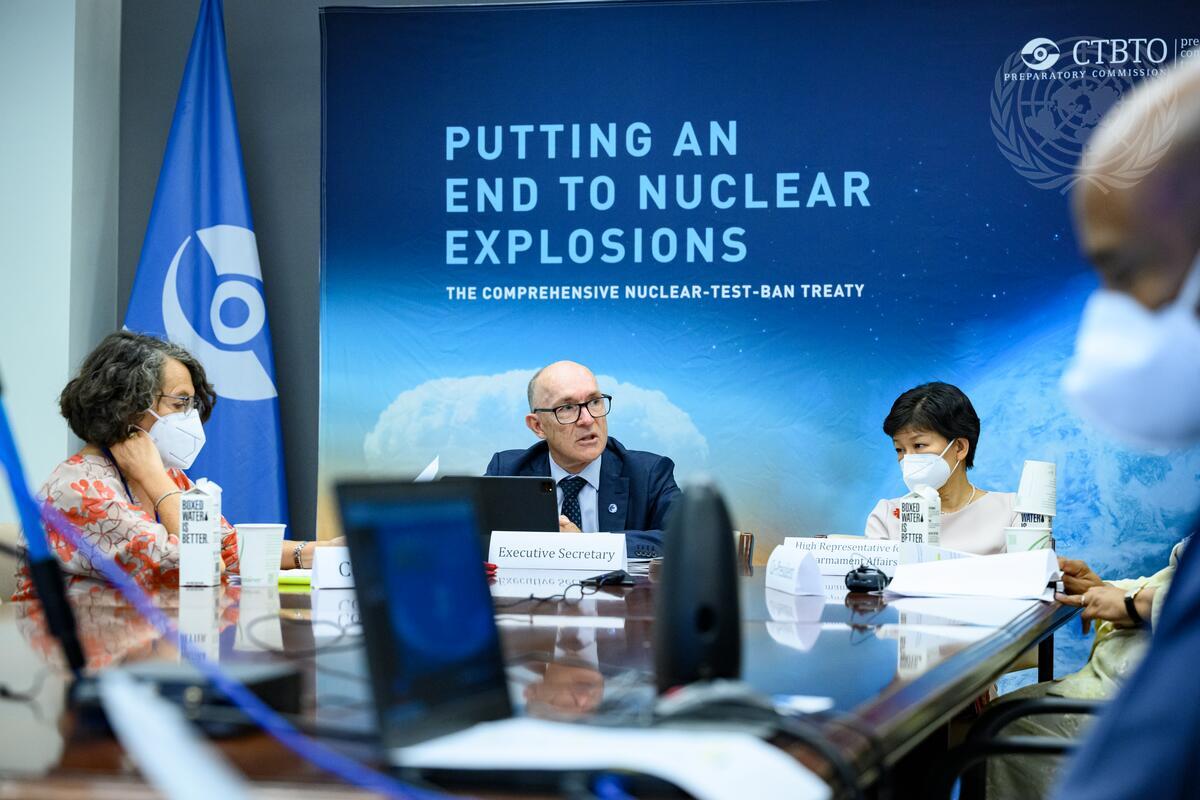The Comprehensive Nuclear-Test-Ban Treaty: A success story ready for completion
As news headlines herald a return to a darker age of nuclear brinkmanship, with fears that different states might develop, test or even use nuclear weapons, 176 countries have chosen to take a bold stand.
The 25th anniversary year of the Comprehensive Nuclear-Test-Ban Treaty (CTBT), which opened for signature on 24 September 1996, has generated fresh momentum towards securing a world free of nuclear testing by anyone, anywhere, for all time.
In the past year alone, Dominica, Equatorial Guinea, The Gambia, São Tomé and Príncipe, Timor-Leste, and Tuvalu have stepped up to ratify the Treaty, recognising that the international community’s best protection against nuclear threats is to strengthen and reinforce the global nuclear disarmament and non-proliferation regime, of which the CTBT is a core element.
Although it has not yet entered into force, the CTBT is already delivering on its promise for a safer world. Ratified already by 176 states and signed by 186, it is a strong collective confidence- and security-building measure and a powerful brake on nuclear proliferation, preventing the development of more deadly nuclear weapons and curbing a dangerous spiral of global nuclear competition.
A landmark achievement, the CTBT brought a firm close to an era of unrestrained nuclear testing that fuelled the Cold War nuclear arms race. More than 2,000 nuclear tests were conducted in the five decades from the first nuclear explosion above the desert sands in New Mexico in 1945 to the birth of the CTBT in 1996.
Since then, the CTBT has created and sustained a norm against nuclear testing so powerful that less than a dozen nuclear tests have been conducted following its adoption; a norm breached by only one country since the turn of this century.
And it has the means to back this up: a global monitoring system that allows no nuclear explosion to go undetected. Compliance with the CTBT will be demonstrated by the International Monitoring System (IMS), a network of state-of-the-art monitoring facilities strategically located across the globe. Now, more than 93% complete, it has already demonstrated its effectiveness by quickly and accurately detecting all six nuclear tests carried out in this millennium.
IMS data can also benefit humanity in a plethora of broader ways, from aiding early tsunami warnings or studying climate change to strengthening international response capabilities in the event of a nuclear emergency.
But norms and good intentions are not enough. The CTBT needs to enter into force.
As we move forward, it is crucial that we continue to focus on practical steps to strengthen the Treaty and urge states that have not yet done so to sign and ratify the CTBT.
The world came together in 1996 and promised a verifiable end to nuclear testing. We have the means and technology to turn this promise into reality.
The CTBT is a success story, and that is good news at a time when the world is grappling with multiple crises that undermine the norms and institutions that were erected to advance global peace and security.
We reaffirm our commitment to work together with all States and partners to ensure that nuclear testing is a subject discussed in history class, instead of at the breakfast table.
Disclaimer: The opinions articulated above represent the views of the author(s) and do not necessarily reflect the position of the Asia Pacific Leadership Network or any of its members. APLN’s website is a source of authoritative research and analysis and serves as a platform for debate and discussion among our senior network members, experts, and practitioners, as well as the next generation of policymakers, analysts, and advocates. Comments and responses can be emailed to apln@apln.network.
Image: Marina Sereni, Vice Minister of Foreign Affairs and International Cooperation of Italy; Rob Floyd, Executive Secretary of the Comprehensive Nuclear-Test-Ban Treaty Organization (CTBTO); and Izumi Nakamitsu, High Representative for Disarmament Affair at the International Conference on Facilitating Entry into Force of Comprehensive Nuclear-Test-Ban Treaty in September 2021 in New York. Loey Felipe/UN Photo.
–Published in partnership with the European Leadership Network (ELN)

